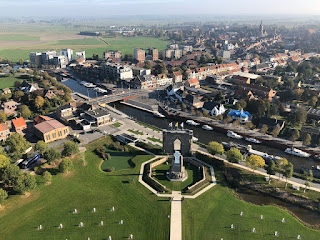List of World War I sites in Belgium
Use the links below to see photos and texts about these Western Front sites.
I toured The Western Front in 2018, 100 years after the end of fighting in World War I. I began by crossing from England to Calais, France as my Grandfather Frederick Charles Sutton did in August 1914.

See the Nieuwpoort beaches were the British stood with the Belgians as part of holding the line against the German Race to the Sea.

See the World War I memorial site and excellent 22 floor Yser Museum within a tower that has views of the area.
Hooge is a village about two miles east of Ypres, Belgium. The Hooge Crater was the result of a blown mine 19 July 1915. British Tunnellers dug beneath the German concrete structures in about 5.5 weeks.

The Hyde Park Corner (Royal Berks) Cemetery is a Commonwealth War Graves Commission cemetery in the Hainaut Region of Belgium. It is close to Ploegsteert Wood.
Publications (many free downloads)

The Hyde Park Corner (Royal Berks) Cemetery is a Commonwealth War Graves Commission cemetery in the Hainaut Region of Belgium. It is close to Ploegsteert Wood.
Connections
Publications (many free downloads)







































